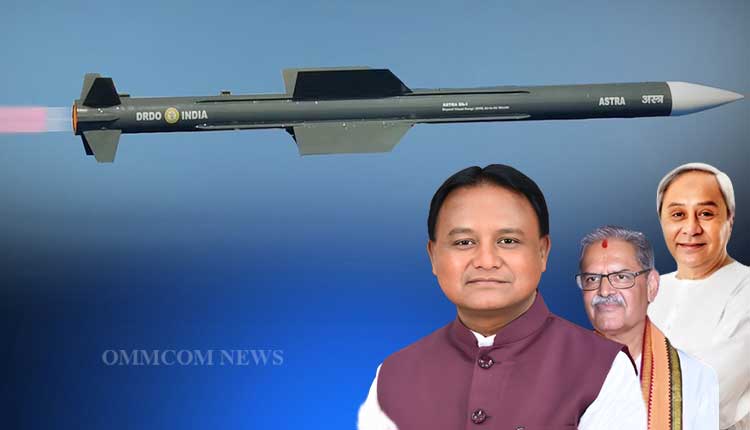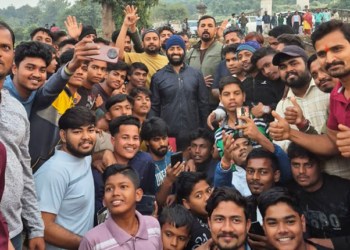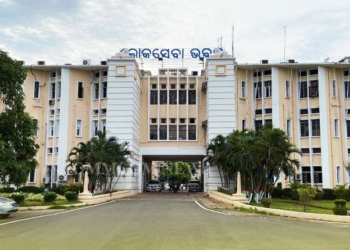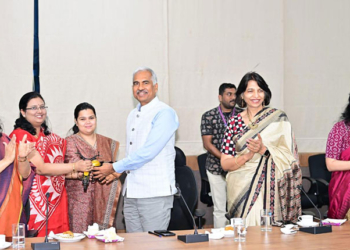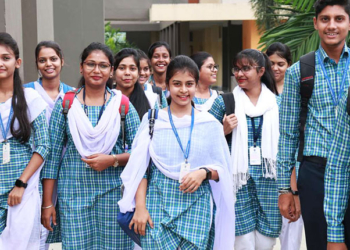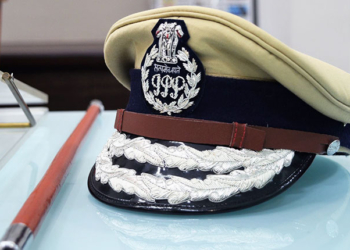Bhubaneswar: Odisha Chief Minister Mohan Charan Majhi, Deputy Chief Minister Kanak Vardhan Singh Deo, and Leader of Opposition Naveen Patnaik have congratulated the Defence Research and Development Organisation (DRDO) and the Indian Air Force (IAF) for the successful flight tests of the indigenously developed Beyond Visual Range Air-to-Air Missile (BVRAAM) ‘Astra’, equipped with an indigenous radio frequency (RF) seeker.
The missile was test-fired from a Sukhoi-30 Mk-I fighter jet off the coast of Odisha, marking a significant achievement in India’s pursuit of self-reliance in critical defence technologies.
Taking to social media platform X, Chief Minister Mohan Charan Majhi hailed the achievement, stating, “Congratulations to @DRDO_India & @IAF_MCC on the successful trials of Beyond Visual Range Air-to-Air Missile (BVRAAM) ‘ASTRA’ with an indigenous RF seeker from Su-30 Mk-I off the coast of Odisha. This is a proud moment showcasing India’s growing defence capabilities and Odisha’s crucial role in strategic advancements and indigenous aerospace technologies. A significant step towards self-reliance in critical defence systems.”
Congratulations to @DRDO_India & @IAF_MCC on the successful trials of Beyond Visual Range Air-to-Air Missile (BVRAAM) ‘ASTRA’ with indigenous RF seeker from Su-30 Mk-I off the coast of Odisha.
This is a proud moment showcasing India’s growing defence capabilities and Odisha’s… https://t.co/0f9MlqWR3x
— Mohan Charan Majhi (@MohanMOdisha) July 12, 2025
Deputy Chief Minister Kanak Vardhan Singh Deo also expressed pride in Odisha hosting the test, “Proud to share that the successful flight-test of the Astra Beyond Visual Range Air-to-Air Missile, equipped with an indigenous RF seeker, was conducted today off the coast of Odisha—from our very own Chandipur range. As someone deeply rooted in Odisha’s journey of progress, it’s a moment of pride to witness our state play host to such a milestone in India’s defence innovation. Kudos to DRDO, IAF, and the many public and private contributors who made this possible. Precision, performance, and pride—Astra reflects our nation’s growing self-reliance and technical brilliance.”
🌊 Proud to share that the successful flight-test of the Astra Beyond Visual Range Air-to-Air Missile, equipped with an indigenous RF seeker, was conducted today off the coast of Odisha—from our very own Chandipur range.
As someone deeply rooted in Odisha’s journey of progress,… https://t.co/X8exU4rMnr
— Kanak Vardhan Singh Deo (Modiji Ka Parivar) (@KVSinghDeo1) July 11, 2025
Leader of the Opposition and former Chief Minister Naveen Patnaik also congratulated DRDO, stating on X, “Congratulate @DRDO_India on the successful flight-test of indigenous Beyond Visual Range Air-to-Air missile (BVRAAM) ‘Astra’ equipped with indigenous Radio Frequency (RF) Seeker from Su-30 Mk-I platform off the coast of #Odisha.”
Congratulate @DRDO_India on the successful flight-test of indigenous Beyond Visual Range Air-to-Air missile (BVRAAM) ‘Astra’ equipped with indigenous Radio Frequency (RF) Seeker from Su-30 Mk-I platform off the coast of #Odisha.#DRDO
— Naveen Patnaik (@Naveen_Odisha) July 12, 2025
Meanwhile, the Ministry of Defence confirmed that the tests were conducted on Friday and involved two missile launches against high-speed unmanned aerial targets under varying ranges, target aspects, and platform conditions. In both cases, the missiles intercepted and destroyed the targets with pinpoint accuracy, validating the system’s performance.
The indigenous RF seeker, designed and developed by DRDO, demonstrated exceptional performance, along with all other missile subsystems. The test was monitored using advanced tracking instruments at the Integrated Test Range (ITR) at Chandipur in Odisha.
With a range exceeding 100 km, the Astra missile is equipped with advanced guidance and navigation systems.
Its development involved collaboration between multiple DRDO laboratories and over 50 Indian industries, both public and private, including Hindustan Aeronautics Limited (HAL).




